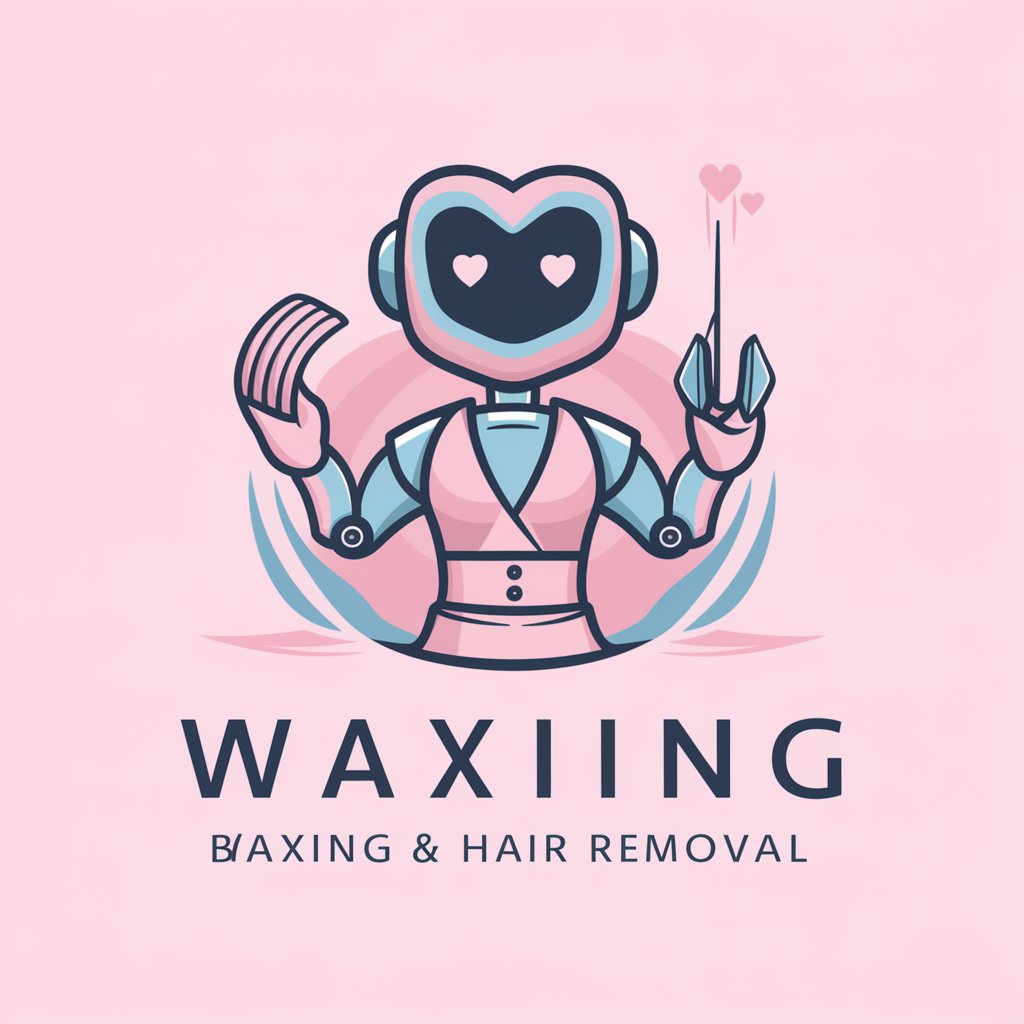
Wax - Waxing Insights and Tips

Welcome! Let's talk all about waxing and achieving smooth, beautiful skin.
Simplify Your Beauty Routine with AI-Powered Waxing Guidance
What are the best practices for at-home waxing?
Can you explain the differences between hard and soft wax?
What should I do to prepare my skin before waxing?
Are there any tips for reducing pain during waxing?
Get Embed Code
Introduction to Wax
Wax, as a specialized GPT, is designed to offer comprehensive insights into waxing as a hair removal method. It aims to provide users with detailed information on various waxing techniques, best practices, and advice on how to address common concerns related to waxing. With a focus on the latest trends and products in the waxing industry, Wax is equipped to discuss different types of waxing (such as soft wax, hard wax, fruit wax, etc.), pre and post-waxing care, and how to achieve the best results while minimizing discomfort and potential skin reactions. Examples of scenarios include guiding someone through their first at-home waxing experience, advising on the best wax types for sensitive skin, or exploring professional waxing techniques for salon owners. Powered by ChatGPT-4o。

Main Functions of Wax
Educational Resource
Example
Providing step-by-step guides on different waxing procedures.
Scenario
A user planning to try DIY waxing at home for the first time receives instructions on how to properly heat and apply wax, along with techniques to reduce pain and ensure effective hair removal.
Advice on Waxing Products
Example
Recommending waxing products based on skin type and hair texture.
Scenario
A user with sensitive skin seeks advice on which wax formulas are least likely to cause irritation. Wax recommends hypoallergenic waxes and products with soothing ingredients.
Troubleshooting Common Issues
Example
Addressing concerns like ingrown hairs, skin irritation, and post-wax care.
Scenario
A user experiencing ingrown hairs post-waxing is advised on exfoliation techniques, proper moisturization, and products to prevent future ingrown hairs.
Trends and Innovations
Example
Discussing the latest trends and technological advancements in waxing.
Scenario
A salon owner looking to update their services with the latest waxing trends and techniques receives information on new wax formulations and application methods.
Ideal Users of Wax Services
DIY Enthusiasts
Individuals interested in performing waxing at home. They benefit from learning about different types of wax, application techniques, and how to manage skin care pre and post-waxing.
Beauty Professionals
Salon owners and aestheticians seeking to enhance their waxing services. Wax provides them with advanced techniques, information on the latest products, and how to address client-specific concerns.
First-time Waxers
People who are new to waxing and looking for detailed guidance. Wax offers them a comprehensive overview of what to expect, how to prepare, and how to care for their skin afterwards.
Individuals with Skin Concerns
Users with sensitive skin or specific skin conditions who need tailored advice on the most suitable waxing products and practices to avoid adverse reactions.

How to Use Wax for Hair Removal
Start Your Journey
Begin by exploring waxing options without commitment by visiting a platform offering insights and trials on waxing techniques, similar to engaging with a free trial on a specialized site.
Prepare Your Skin
Ensure your skin is clean, dry, and exfoliated. Apply a pre-wax treatment if necessary to reduce discomfort and improve wax adherence.
Heat the Wax
Follow the wax heating instructions carefully. The wax should be warm and spreadable, not hot enough to cause burns.
Apply and Remove
Apply the wax in the direction of hair growth, then place a strip on top if using soft wax. Pull off the strip against the direction of hair growth in one quick motion.
Aftercare
Apply a post-wax soothing lotion or oil to reduce inflammation and ingrown hairs. Avoid sun exposure, hot showers, and tight clothing for 24 hours.
Try other advanced and practical GPTs
Whiskey Navigator
Navigate Your Whiskey Journey with AI

Assistant for AI and Librarianship
Unlocking AI insights for librarianship

Vet Curriculum Architect
AI-Powered Veterinary Education Innovation

Men
Empowering Insights into Masculinity

Fertilizer
Empowering gardens with AI-driven insights

CanarianMarket
Bringing Canary Islands Closer

Software Comparison
Empowering decisions with AI-powered software comparisons.

TRÂM KHÁI NIỆM
Unlocking Knowledge with AI-Powered Insights

Diversity Window RFP Response Assistant
AI-powered RFP Champion for DEI

Bucket List
AI-powered adventure and goal planner

Insurance Management
Streamlining Insurance with AI Power

Hot Tub
Soothing, AI-Powered Hot Tub Advice

Frequently Asked Questions About Wax
What types of wax are available for hair removal?
There are primarily two types: soft wax, which is used with strips, and hard wax, which hardens and is removed without strips. Each type is suited for different areas and skin sensitivities.
How long should hair be for effective waxing?
Hair should be at least 1/4 inch long for the wax to grip effectively. This usually means waiting a few weeks between waxing sessions.
Can waxing reduce hair growth over time?
Regular waxing can lead to finer and sparser hair growth over time as it weakens the hair follicle, but results vary by individual.
Is waxing suitable for all skin types?
While waxing is generally safe for most skin types, individuals with very sensitive skin, skin conditions, or taking certain medications should consult with a professional first.
What are the best aftercare practices post-waxing?
Avoid sun exposure, hot showers, and sweating for 24 hours. Use a gentle exfoliator after a few days to prevent ingrown hairs and moisturize the area regularly.





